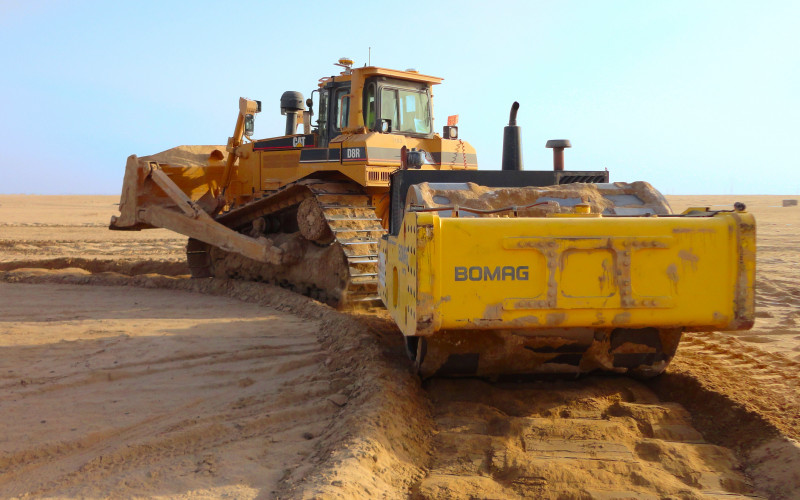/ Home / Activities / Surface Compaction
Surface Compaction
Granular soils such as sand can be loaded directly, but densification is often required prior to construction to increase the load-bearing capacity.
Also, granular soil saturated with water can lose its strength and stiffness in response to an earthquake or other rapid stress. This process, known as liquefaction, can result in very serious damage. Re-arranging the soil particles into a denser state lowers the risk of both settlement and liquefaction.
Wicks uses various compaction techniques to improve granular soils. The best compaction equipment for the job depends mainly on the layer thickness of the sand. The ability to compact thicker layers saves money and time. Wicks owns and operates a wide range of compaction equipment suited to your needs.
Rapid Impact Compaction
To compact soils at intermediate depths of up to 6 metres, Wicks deploys excavators fitted with compaction hammers.
This so called Rapid Impact Compaction (RIC) method, drops a heavy tamper from relative low height with high frequency. The impact causes the soil particles to re-arrange.
Heavy Energy Impact Compaction
For the compaction of more shallow layers of up to 2 metres, Wicks uses heavy-duty roller compactors. Our Heavy Energy Impact Compactors (HEIC) are pulled by tractors at constant speeds.
The rollers are shaped to deliver high-energy blows to the ground for compaction and offer optimum performance. This technique makes HEIC a very cost-effective compaction method.


